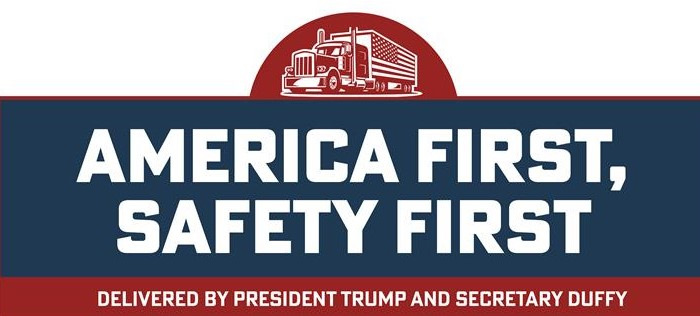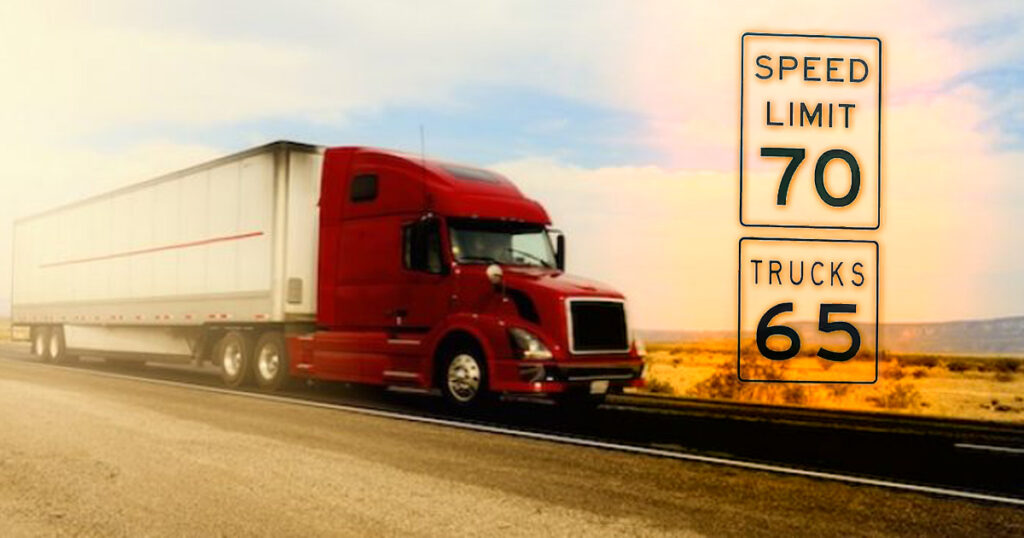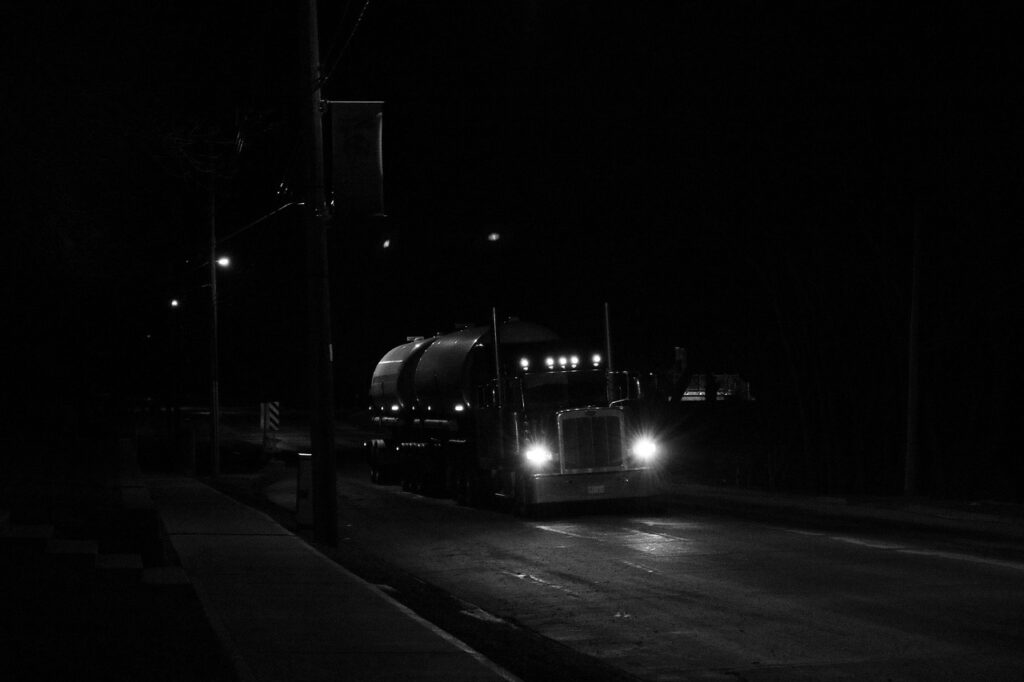Trump Administration DOT Brake Checks Obama’s Speed Limiter Rule, Revs Up Pro‑Trucker Package
2016 Proposal: Obama Administration’s Attempt to Rein in Truckers Speeds
In August 2016, under President Barack Obama, the U.S. Department of Transportation (DOT), through the National Highway Traffic Safety Administration (NHTSA) and the Federal Motor Carrier Safety Administration (FMCSA), introduced a joint rulemaking proposal to mandate speed-limiting devices on heavy commercial motor vehicles. The regulation targeted all newly manufactured trucks, buses, and multipurpose passenger vehicles with a gross vehicle weight rating (GVWR) of 26,000 pounds or more.
The proposed rule suggested setting maximum speeds at 60, 65, or 68 miles per hour. Although the agencies did not designate a preferred option, they emphasized the projected safety and environmental benefits of limiting top speeds for large trucks. According to their estimates, the policy could save hundreds of lives annually, reduce the severity of crashes, and conserve over $1 billion in fuel costs each year, due to lower aerodynamic drag and engine strain.
Safety advocacy organizations such as the National Safety Council (NSC), the Truck Safety Coalition, and Advocates for Highway and Auto Safety praised the initiative. They argued that reducing truck speeds would lessen the impact force in crashes and improve stopping distances. Data cited by these groups suggested that a nationwide speed cap of 65 mph for large trucks could prevent more than 200 deaths and nearly 5,000 injuries every year.
However, opposition from the trucking industry was swift and sustained. Many independent owner-operators and smaller fleets, represented by Truck Owners and Drivers Association (#JoinTODA) criticized the rule as impractical and dangerous. They pointed to the risks of creating hazardous speed differentials between trucks and passenger vehicles, especially on highways where cars typically travel at 70–75 mph. Others warned of longer delivery times, increased congestion, and higher operational costs, particularly for small carriers operating under tight schedules.
Larger fleets were more divided. Some, such as UPS and Schneider National, already used speed limiters as part of their safety protocols and supported standardized rules. But many stakeholders questioned whether a one-size-fits-all federal mandate could adapt to diverse geographic, operational, and weather conditions across the country.
Though the rule advanced to the Notice of Proposed Rulemaking (NPRM) stage in 2016, it ultimately stalled during the Trump administration’s first term, and was later revived during the Biden administration.
2025 Decision: Trump Administration Withdraws Proposal Under “Pro-Trucker” Regulatory Rollback
On July 26, 2025, the Department of Transportation under President Donald J. Trump and Secretary of Transportation Sean Duffy formally withdrew the Obama-era speed limiter proposal, ending nearly a decade of regulatory back-and-forth. The move is part of the Trump administration’s broader “Pro-Trucker Package”, a multi-pronged initiative aimed at reducing federal regulatory burdens on the trucking industry.
In a press release from FMCSA, officials cited inconclusive data, shifting technology, and a lack of industry consensus as key reasons for the withdrawal. Regulators noted that advances in active safety technologies, including automatic emergency braking, adaptive cruise control, and lane-keeping systems, are already improving highway safety without the need for rigid speed mandates.
“We’re listening to America’s truckers,” said Secretary Duffy at a press conference in St. Louis. “These hard-working professionals know their roads, know their equipment, and know how to keep America moving. Speed limiters won’t make them safer, real safety comes from better training, better infrastructure, and trusting the men and women behind the wheel.”
The FMCSA’s decision followed tens of thousands of public comments—the majority of which opposed the rule. During a 2022 revival under President Biden, FMCSA received over 15,000 formal comments from truck drivers, carriers, logistics companies, and public stakeholders. Many highlighted that artificially limiting truck speeds could actually increase the risk of rear-end collisions, especially in high-speed traffic zones where trucks would be traveling significantly slower than the flow of traffic.
The announcement has been met with praise by several industry groups. Truck Owners and Drivers Association issued statement, calling the mandate “unsafe” and “yet another example of FMCSA’s lack of understanding root cause of crumbling road safety”
Other trucking associations, including the American Trucking Associations (ATA), expressed more measured support, stating they would continue to promote voluntary speed-limiting practices among their fleets while opposing mandates that restrict operational flexibility. Hence, promoting their support towards independent owner-operators and regulating their company drivers under the limit through company’s policies.
Legislative Shield: DRIVE Act Aims to Block Future Mandates
In addition to withdrawing the rule, the Trump administration has thrown its support behind a legislative proposal that would permanently prohibit federal mandates on speed limiters for commercial vehicles. The DRIVE Act—introduced by Senator Steve Daines (R-MT) and Representative Josh Brecheen (R-OK)—seeks to codify into law that no federal agency may require a speed-limiting device on a CMV.
According to its sponsors, the bill aims to “protect driver autonomy” and prevent “one-size-fits-all regulations that don’t reflect real-world conditions.” The bill is currently gaining traction in the House and Senate, particularly among lawmakers from rural and freight-heavy states.
If passed, the DRIVE Act would nullify not just the existing rulemaking, but any future attempts by the DOT or FMCSA to impose speed limiters, effectively ending the debate at the federal level.
Implications for Safety, Efficiency, and Policy
The end of the speed limiter proposal signals a broader shift in federal transportation policy—away from mandates and toward industry-led practices and state-level flexibility. While the debate remains far from settled among safety experts, insurers, and logistics planners, the trucking community sees the rollback as a clear win for driver independence, operational efficiency, and regulatory sanity.
Still, safety advocates continue to urge caution. Organizations like the National Safety Council argue that the decision could lead to increased fatalities, especially as truck crash deaths have risen over the past decade. According to the latest federal data, nearly 5,000 people are killed in large truck crashes each year, and speed is a contributing factor in many of them.
The question remains: Can voluntary measures and new technologies fill the safety gap left by regulatory rollbacks? For now, the answer will rest in the hands of drivers, fleet managers, and lawmakers navigating the long road ahead. #JoinTODA, Truck Owners and Drivers Association, your regional chapter to pave the road ahead!

Truckers of the World, Unite!
#JoinTODA, Truck Owners and Drivers Association, a Global Network


